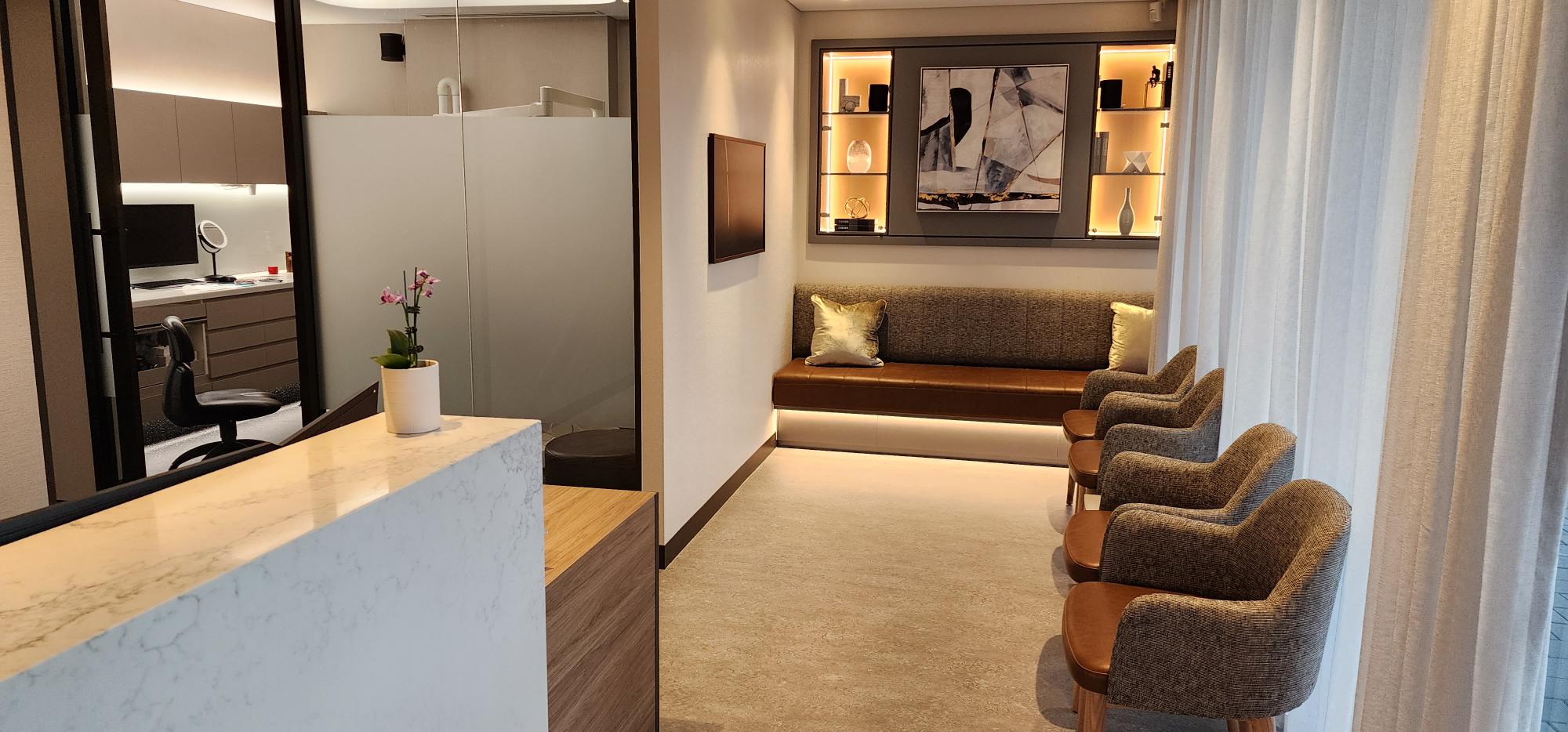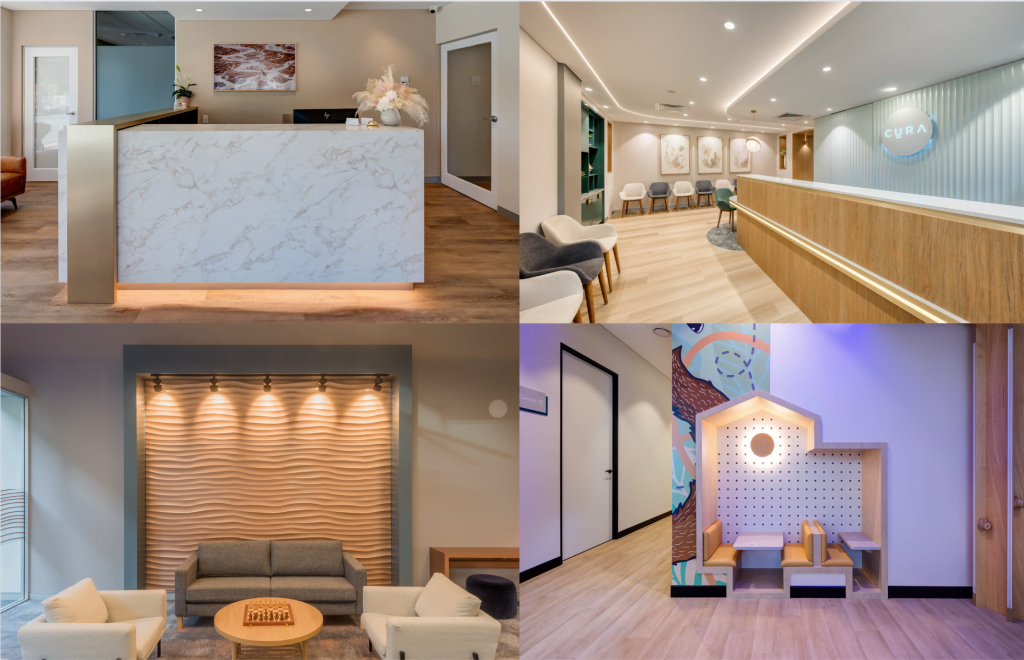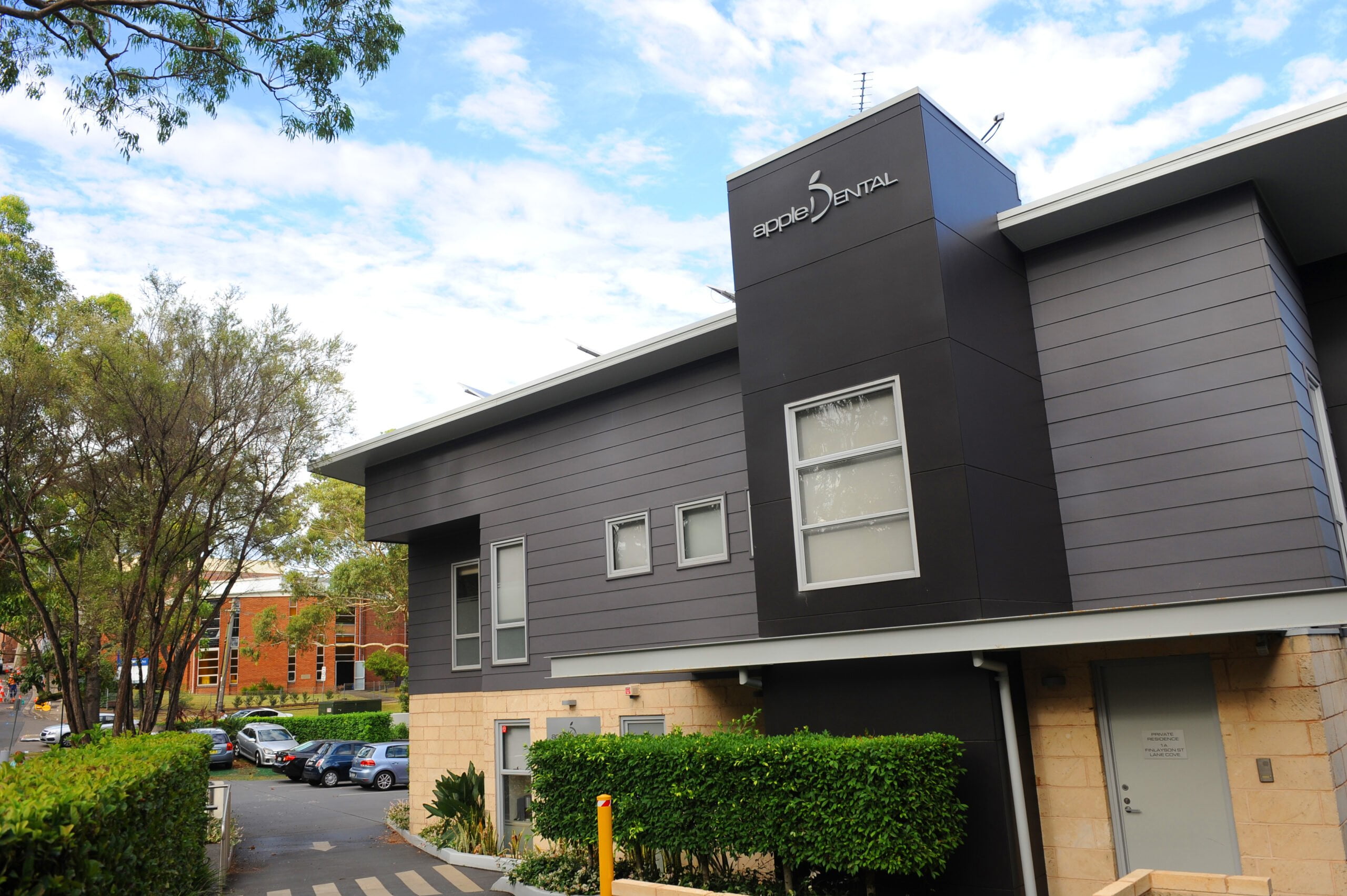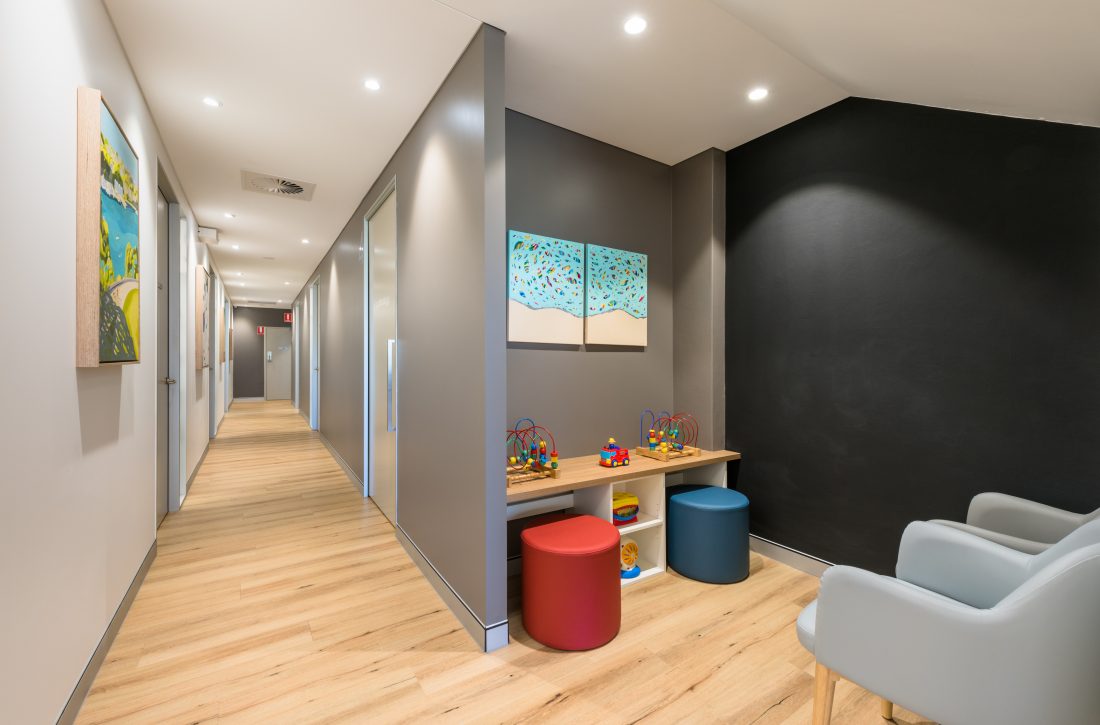The importance of lighting in dental surgery fitouts cannot be overstated. Good lighting helps dentists perform accurately and with precision, allowing for the proper diagnosis and treatment of dental issues. Proper lighting also ensures the safety of dental procedures, as dentists can work more efficiently and avoid errors or complications that can occur due to inadequate lighting. In addition, good lighting can create a comfortable and calming atmosphere for patients, reducing anxiety and stress before and during dental procedures.
As a dental design and fitout company, we pay attention to lighting requirements. When done correctly, good lighting can enhance a patient experience as well as encourage a positive treatment outcome. That’s a win-win for everyone.
What is the Importance of Lighting in Dental Fitouts?
Visiting the dentist can be a nerve-wracking and stressful experience for some, which is why creating a calm atmosphere with the right mix of lighting is crucial. Clever lighting can help ease your patients’ anxieties while also playing a critical role in setting the right atmosphere for your practice.
Instantly calm your patients and make them feel comfortable with an interior design that cleverly integrates lighting. Implementing simple yet strategic lighting is key to making your patients feel relaxed and reassured under your care, as well assisting in the overall success of your performance as a practitioner.
As dental fitout specialists, we’re always conscious of what a good dental clinic design needs to encompass. Why do we place such an emphasis on correct lighting? Read on to discover the pivotal role of both natural and artificial lighting in building an aesthetically pleasing and functional dental clinic.
What are the different types of lighting in a clinic?
Lighting in a dental clinic can be divided into two categories: task lighting and general lighting.
Task lighting
Lighting that is used to make the completion of a task easier is known as task lighting. This type of lighting is required in your examination and procedure rooms, and can be a mix of ceiling fixtures, and lighting integrated into your overhead joinery, to light up your work surfaces.
General lighting
As the name suggests, general lighting is used in the reception and waiting areas. It is a comfortable level of brightness that provides a space with universal, non-specific illumination.
By using a combination of lighting techniques, your dental clinic can create a calming atmosphere that can reduce patient anxiety whilst waiting for their procedure.
The psychology behind using the right lighting
Part of the beauty of any space lies in the way it is illuminated. Lighting is the unsung hero that can make or break the aesthetic appeal of a room. A simple flick of a switch can completely transform the ambiance of a room. From creating a warm and cosy atmosphere to highlighting architectural details, the right lighting can truly help you set the tone in creating a visually appealing and emotionally inviting space.
It’s important to establish a welcoming environment for your patients as they enter your clinic or while they wait in the lounge. A room bathed in warm, soft light exudes comfort and relaxation. In stark contrast, a dark and dimly lit space with inadequate lighting can make patients feel anxious and apprehensive.
Why lighting matters in the dentist’s chair
Inadequate lighting in a dental clinic can lead to errors and inefficiencies in several ways. If the lighting is too dim or uneven, it can make it difficult for your dentist to see the tooth or the area being treated. This can result in inaccurate diagnosis and treatment. Poor lighting can make it difficult for your dentist to see what they are doing, which can increase the likelihood of mistakes, prolonging the procedure. Most importantly, inadequate lighting can cause fatigue for the dentist, which will affect their ability to focus. The result can compromise the quality of the treatment and potentially harm the patient.
Lighting mastery: Tips for achieving the perfect lighting balance in your dental clinic
At the dental reception
We believe you should incorporate a combination of natural light and artificial lighting. Natural lighting can be harnessed through large windows or skylights, providing a full spectrum of colours that provides a connection to the outdoors and a sense of openness.
For the waiting room
Warm lighting should be encouraged. Soft tones can create a cosy, calm and inviting atmosphere, which can help patients feel more relaxed and at ease while they wait. Uplighting or wall sconces can also help to create a softer and more diffused light that can be easier on the eyes.
In the dental surgery room
Task lighting is necessary in dental surgery rooms. This can take the form of integrated lighting under the overhead cabinets and adjustable lights mounted on dental chairs. This will provide focused lighting on specific areas for procedures. Having direct lighting above a chair can cause discomfort for the patient. In these cases, indirect lighting is more suitable.
Striking the right balance between natural and artificial lighting
Humans thrive in natural light, and regular exposure to it can help reduce stress and anxiety levels, as well as enhance productivity and creativity. At Perfect Practice, we incorporate as much natural light into our dental clinic designs as possible. Not only is this necessary during dental procedures where it’s essential to see the true colours of a patient’s teeth and gums for accurate diagnosis and treatment plans, but it also helps to reduce eye strain on the practitioner.
However, there are times when artificial lighting is necessary for both patients and staff. For example, it can be used to supplement or replace natural light in order to provide adequate visibility – this is especially important for those after-hours appointments. Furthermore, root canals or surgeries require very precise lighting conditions to ensure optimal results. In these cases, specialised dental lighting equipment may be necessary. Especially where cosmetic dentistry is concerned, if the lighting is not at the correct “temperature,” then there is a risk of mismatched veneers.
Lighting terminology: What does “temperature” mean in lighting?
Colour temperature is a way to describe the light appearance provided by a light bulb. It is measured in degrees of Kelvin (K) on a scale from 1,000 to 10,000. Typically, Kelvin temperatures for commercial and residential lighting applications fall on a scale between 2000K to 6500K. The warmer the colour the lower the colour temperature. Candles, for example, when alight can exude around 2000k compared to natural daylight typically ranging between 5000 – 6500k. The majority of LED lighting produce between 2700k – 5000k.
Ready to illuminate your dental fitouts? Discover the crucial role that lighting plays in creating a perfect practice. Get in touch with Perfect Practice at 1800 358 888 to schedule your fitout consultation. Don’t let poor lighting dim your success!








